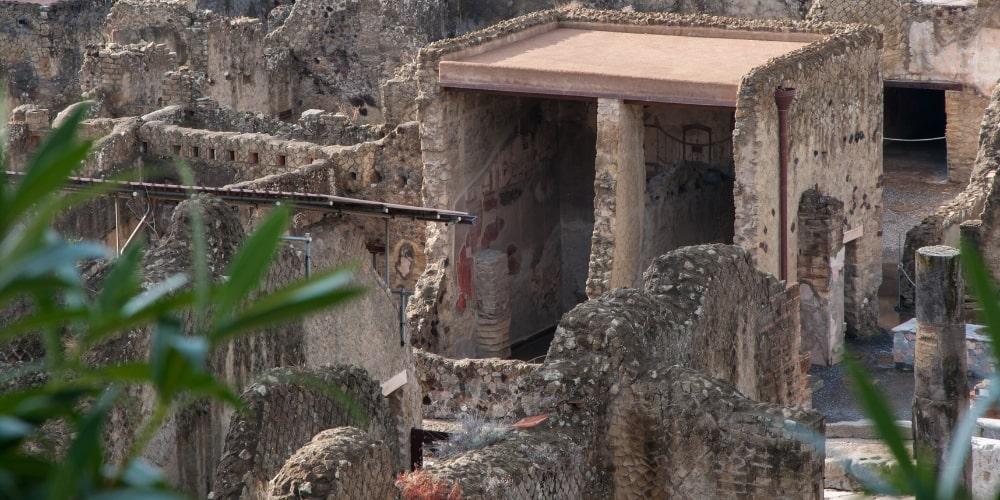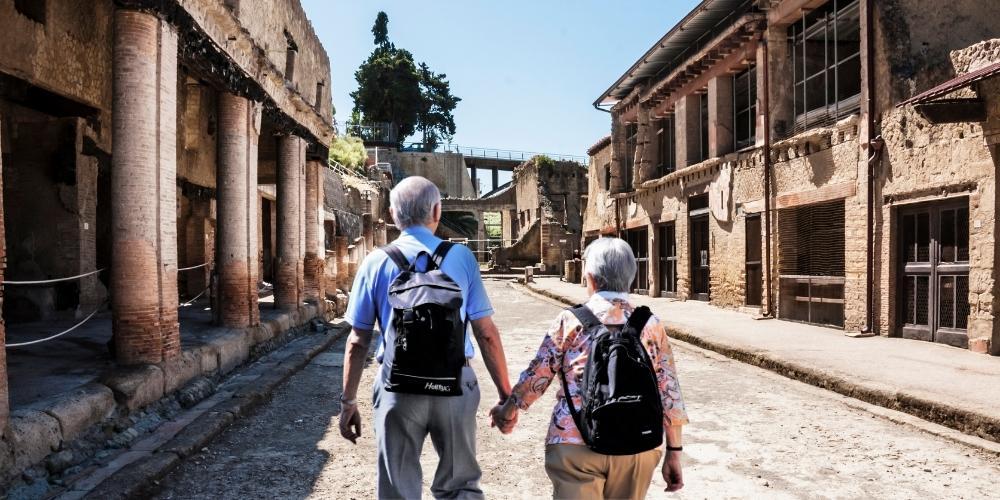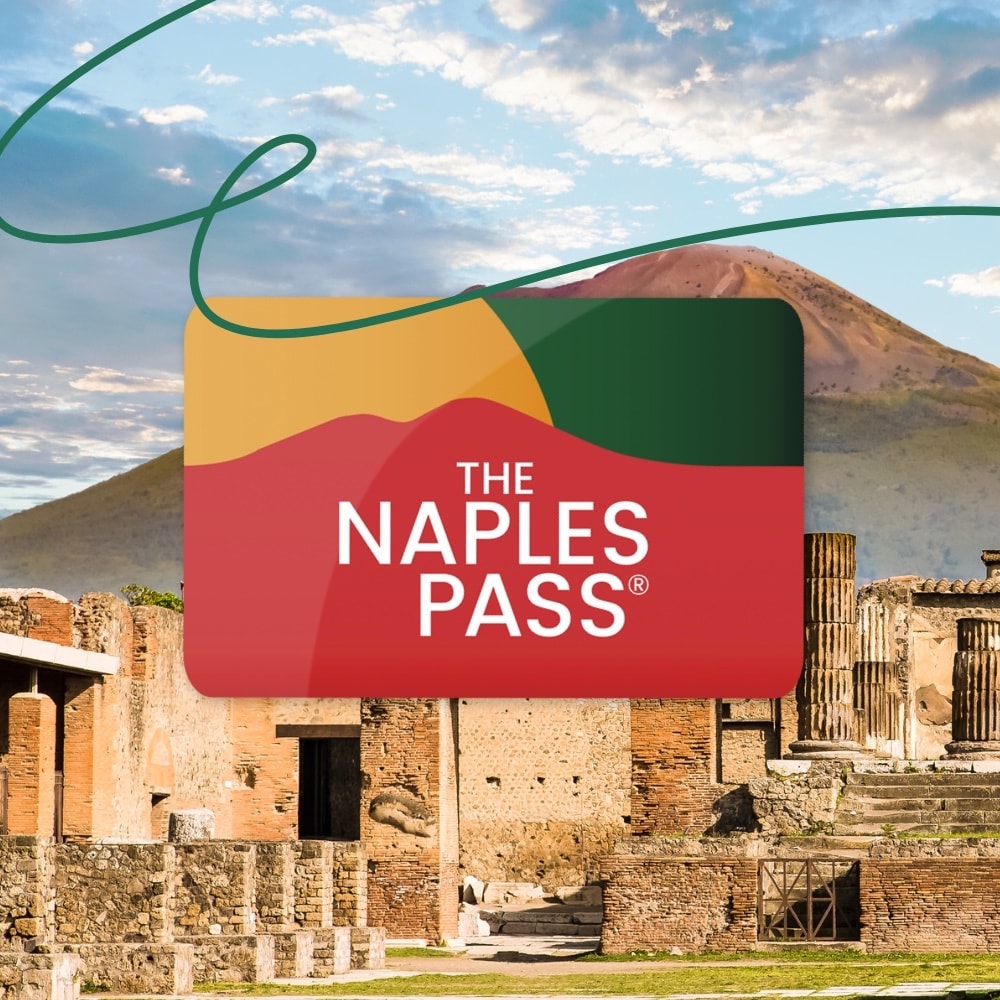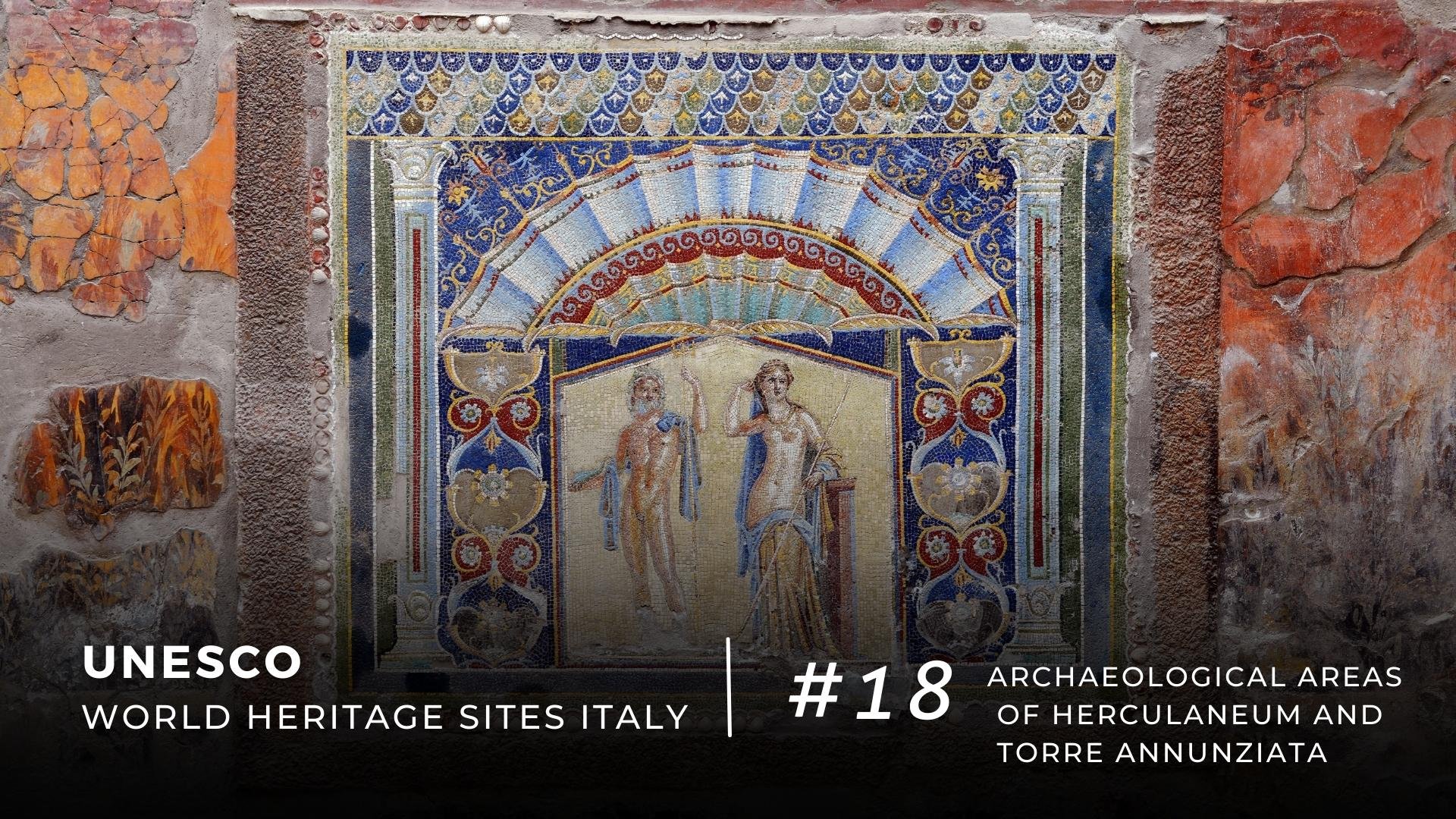A UNESCO World Heritage Site since 1997, the archaeological area comprising the excavations of Pompeii, Herculaneum and Oplontis (today's Torre Annunziata) is rightfully among the places to visit at least once in a lifetime.
The devastation that swept through the cities in the shadow of Vesuvius following the eruption of 24 August 79 AD crystallised a piece of a lost society, a slice of Roman life condensed into a microcosm of earth, ash and rock.
While Pompeii, with its 44 hectares of streets, houses, shops, temples and theatres, is already on the bucket list of almost every traveller who sets foot in Campania, the sites of Herculaneum and Oplontis seem to take a back seat.
From the perfect condition of the finds to the unbridled luxury of the most opulent residences: here's what you've missed (if you've never been there) and why you should plan a visit to Herculaneum and Torre Annunziata. A priceless experience awaits you as you discover some of Italy's most precious treasures.

The UNESCO World Heritage Sites of Herculaneum and Torre Annunziata

The vivid and faithful picture of the Roman society that emerges not only in Pompeii but also in the UNESCO sites of Herculaneum and Torre Annunziata has no parallels.
By destroying everything, Vesuvius paradoxically preserved a precise, unrepeatable moment of past history forever.
The exceptional integrity, extent and complexity of urban areas, dwellings and artefacts, the luxury of the so-called "otium" villas and the number of everyday objects that have been unearthed make up an extraordinary mosaic of art, culture and architecture.
Forgotten for centuries and gradually re-emerging from the 18th century onwards, they soon became a crucial stop during the legendary Grand Tour of European aristocrats.
Each site has its own peculiar identity and characteristics. Starting with their extent and state of preservation. Quite simply, what you can see and visit is always a surprise at each of the three UNESCO properties. Here is what you need to know before visiting Herculaneum and Torre Annunziata.
The archaeological site of Herculaneum
With its array of faithfully reconstructed buildings and exhibitions of original artefacts, the Herculaneum archaeological park can be regarded as one of the first models of an open-air museum in Europe.
The currently visitable excavations cover a much smaller area than Pompeii, "just" 4 hectares. However, the blanket of mud and lava that fell on this ancient holiday resort (in Pompeii, it was ash and lapilli) has preserved it remarkably well, as the splendid paintings and refined, brightly coloured mosaics testify. Also, textiles, furniture, jewellery and even a collection of papyri have survived the passage of time almost intact.
In general, the state of conservation of Herculaneum is much better than its larger and more famous neighbour.
Some buildings can be visited internally, revealing rooms still sporting the original multi-storey layout, a detail you won't see in Pompeii. The shops, fitted with the original equipment and furnishing, are astonishing.
The must-see places of the UNESCO site of Herculaneum include a large palaestra, two public baths, the Villa of the Papyri (an imposing library that has yielded a treasure trove of documents and manuscripts), and the House of Neptune and Amphitrite, named after the beautiful mosaic depicted on a wall enclosing the triclinium.
Much of the ancient settlement remains submerged beneath the modern city and can be partially visited through tunnels and underground passages dating back to the 18th century. It will indeed be like travelling in time and space.
An example is the theatre of Herculaneum, one of the very first sites to emerge. The route is not included in the regular visits to the park and you must buy a separate ticket.
In order to reach it, you have to descend 20 metres under the thick layer of lava with a helmet on your head and a torch in your hand, walking down the same Bourbon-era stairs trodden by Grand Tour patrons and visitors from the last two centuries.
A visit to the park of Herculaneum takes approximately three hours. Although it's not strictly necessary, it's better to rely on an expert guide (or, at least, an audio guide) in order to capture all the fascinating hidden details that can be easily skipped when walking around on your own.
Skip the line and visit Herculaneum archaeological parkTorre Annunziata: Oplontis and the Villa of Poppaea
To visit the prototype par excellence of a suburban Roman villa, the most important and representative model in the world, you must travel to Torre Annunziata.
This seaside town is home to the third UNESCO site in the Vesuvian area, Oplontis, a wealthy residential suburb of Pompeii overlooking the sea.
Not a real city, but an area rich in patrician villas, of which only two surviving examples remain today: the villa of Poppaea, a fabulous residence that belonged to Emperor Nero's second wife, and the rustic villa of Lucius Crassus Tertius, probably a farm producing wine and oil. Only the former is open to the public.
The mansion is an otium villa, a type of residence that the imperial aristocracy devoted to relaxation and entertainment, far from the chaos of urban centres. It reflects all the luxury and opulence in which the wealthy classes wallowed.
When Vesuvius erupted, the villa was probably uninhabited due to some renovation work. Today, only a part of the monumental structure can be visited.
The building used to be a true gem. It included a spa complex, a large 60-metre pool, refined winter gardens and rooms richly decorated with statues, fountains, mosaics and paintings that are among the most beautiful and best preserved from the Roman period.
A visit to the excavations of Torre Annunziata takes just over an hour. Although geographically distant, the site is part of Pompeii's archaeological complex. Nevertheless, it's an independent park; you can visit it separately.
How to get to Herculaneum and Torre Annunziata

You can easily reach Herculaneum and Torre Annunziata from Naples and Campania's leading tourist destinations. These two UNESCO archaeological sites are ideal destinations for a day trip during a holiday around the Sorrento Peninsula or the Amalfi Coast.
You can reach Herculaneum from Naples in about 20 minutes by taking a regional train or the Circumvesuviana railway service towards Sorrento or Poggiomarino. The entrance to the site is 700 metres away from the Ercolano-Scavi station, your final destination.
Those who prefer travelling with all the comforts and don't feel like matching train or bus schedules can book a day tour of the Vesuvius National Park and Herculaneum, complete with transfers from Naples.
If you leave from Sorrento, take the Circumvesuviana trains towards Naples. The journey takes 40 minutes.
The route to the site of Torre Annunziata is also quite easy. You have to take the Naples-Sorrento line of Circumvesuviana and get off at the Torre Annunziata Oplonti station.
About the author
Written on 30/12/2022




Lorena Calise
The archaeological areas of Herculaneum and Torre Annunziata reveal the powerful beauty of a tragic and fascinating history. A treasure beyond Pompeii